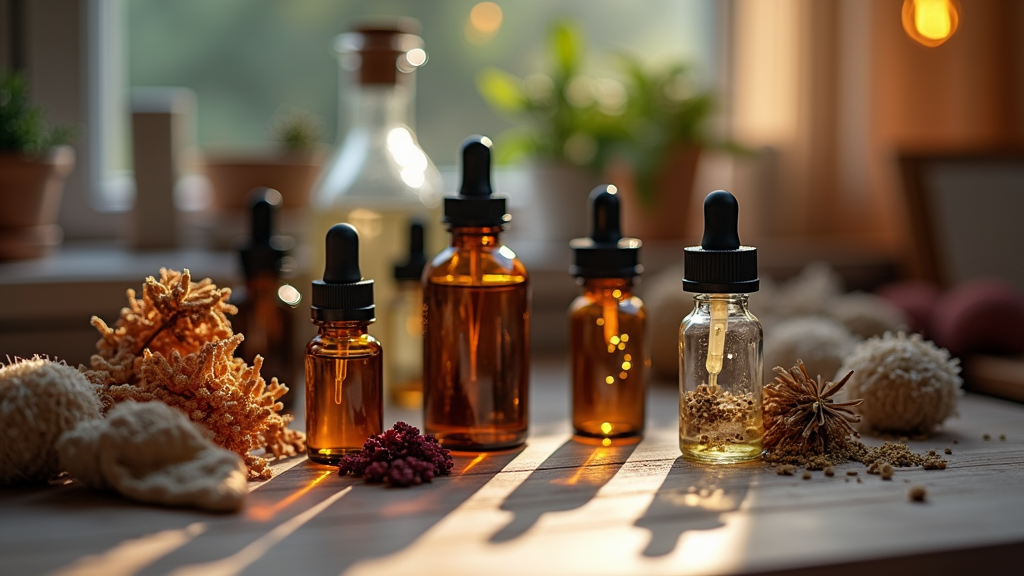Ever wondered what it’d be like to make your own signature scent? Mixing up your own fragrance with essential oils is a fun, personal, and surprisingly easy process. Whether you want a fresh twist on your daily routine, a unique handmade gift, or a hobby that makes your space smell amazing, crafting your own fragrance has plenty of perks. I’ll walk you through how to get started, the basics you’ll want to know, and some handy tips to help you find your scent style.

Why Try Making Your Own Fragrance with Essential Oils?
If you’re like me and wander through the fragrance aisle getting overwhelmed by all the options, crafting your own blend can be pretty freeing. It isn’t just about smelling good; it’s about having something that feels personal and special. Mixing your own lets you skip the chemicals in so many store bought perfumes, and you’ll have full control over what goes onto your skin.
Essential oils aren’t new. They’ve been used for centuries in everything from medicine to spiritual practices. What’s changed is how accessible fragrance making is today. With a simple starter kit (totally worth checking out; here’s a link to a beginner kit to get you rolling), you can experiment with scents right at home, learning what you really enjoy while skipping the markup and mystery ingredients often found on store shelves.
Fragrance Basics You Should Know
Jumping into fragrance blending can feel intimidating at first, but knowing a few key terms helps everything click into place. Here’s what’s super helpful to know before you start:
- Top Notes: These are the scents you smell first, like lemon, grapefruit, or mint. They fade fastest and kick things off with a burst of freshness.
- Middle (Heart) Notes: These show up once the top notes settle down and give your perfume character. Lavender, geranium, and cinnamon work well as middle notes.
- Base Notes: These are the anchors. They last longest and help the scent stick around. Think sandalwood, vanilla, patchouli, or cedarwood.
Essential oils come from plants and have all sorts of supporting roles in wellness, but in fragrance, each oil’s scent “note” creates layers in your final blend. Mixing light top notes, deeper middle notes, and long-lasting base notes makes your perfume both interesting and well rounded. A balanced blend brings the best aspects of each oil forward, creating a scent that shifts slightly over time as it dries on your skin. Knowing how these notes interact lets you tweak and adjust to match your mood or the season.
Simple Steps to Creating Your Own Signature Scent
Mixing up a personal scent isn’t nearly as wild or technical as it might sound. Here’s how I started, and some steps to help you get your first recipe just right:
- Pick Your Oils: Choose three to five essential oils you’re curious about. You can get a sense of their notes by looking at the label or giving them a quick sniff.
- Test Combinations: Dab a small drop of each oil onto its own cotton swab. Hold the swabs together under your nose (without touching skin) and see if the combo appeals to you.
- Build a Blend: Use a small glass bottle (5-10 ml is plenty) and add your oils: about 30% top note, 50% middle, and 20% base oil. You can adjust if you want one scent to stand out more.
- Add a Carrier Oil or Alcohol: To help the fragrance be skin safe and last longer, dilute your blend with a carrier oil (like jojoba or sweet almond) or simple alcohol (like perfumer’s alcohol or even high proof vodka). A good start is 10-15 drops essential oil to every 5 ml carrier oil.
- Let It Rest: This is where patience pays off. Letting the blend sit in a cool, dark spot for a few days (or ideally, two weeks) helps the scents meld together.
Once that’s done, test a tiny dab on your skin. If you love it, you’re done. If not, you can tweak by adding a few drops to adjust a note. Just remember to give the blend another few days to settle after any changes.
What to Consider Before You Start Mixing
There’s more to fragrance making than just tossing some oils in a bottle. Here are some things that I think everyone should know before mixing up their own scent for the first time:
- Skin Sensitivities: Not all essential oils play nice with everyone’s skin. Patch testing your blend on a small spot first is really important to avoid irritation.
- Quality of Oils: Look for 100% pure, therapeutic grade oils. Cheap oils sometimes have fillers or synthetic additives that can change the scent or cause reactions.
- Storage: Natural blends last longer in dark glass bottles, out of sunlight, and away from heat.
- Individual Taste: Just because a combo is popular doesn’t mean you’ll love it. Fragrance is all about what makes you feel happy or confident. Follow your nose and trust your instincts.
Skin Safety
Some essential oils can irritate the skin if they’re too concentrated. Oils like cinnamon, clove, or peppermint are known for being a bit harsh. Always dilute your blend, and do a patch test on your inner wrist or elbow before wearing your perfume out for a whole day. If any irritation occurs, wash off immediately with mild soap and water, and consider tweaking your formula with gentler oils.
Allergies and Scent Preferences
Allergies are another factor. If you’re sensitive to certain botanicals or scents, double-check the oils before using them. And if you’re mixing for friends or gifts, stick to gentle, universally liked scents like lavender, orange, or vanilla to play it safe. Also, keep in mind that some scents can remind people of past events or places, so personal preference is key. Take the opportunity to ask others about their favorites if you’re creating scents for someone else.
Taking Your Homemade Fragrance to the Next Level
Once you’re comfy with the basics, there’s plenty of room to get creative:
- Layer Scents For Depth: Try using more than three oils, or experiment with interesting combos like citrus and spice, or herbal and woodsy oils. Many pros make test strips with different blends and label them for comparison.
- Fine-Tune the Ratio: Want a softer, lighter scent? Use more top notes and less base. Going for something rich and mysterious? Base notes become your secret weapon.
- Solid Perfume or Mists: Your DIY aroma doesn’t have to be in liquid rollon form. You can turn your blend into a solid perfume with beeswax, or a linen or room spray by mixing with distilled water and a touch of alcohol.
- Record Each Recipe: Keep a notebook with your oil ratios and impressions. It’s so easy to forget what you put in your favorite blend, and written notes help you recreate or tweak future recipes.
Having a little kit on hand makes experiments a lot smoother. You can buy a kit to get started, that has mini bottles, droppers, and a handful of commonly loved oils that are great for beginners. Once you get comfortable, expand your collection by picking up new oils every so often and exploring how they mix with your existing favorites.
Everyday Uses for Your Custom Fragrance
Once you’ve mixed up a scent you love, there’s more you can do than just dab it on your wrist. Here are a few ways I like to use my homemade blends:
- Daily Perfume: Replace store bought perfume with a natural, skin loving blend for a gentle, personalized aroma.
- Linen Spray: Add a few drops to distilled water in a spray bottle and freshen up your sheets, towels, or even curtains for a relaxing, clean-smelling atmosphere.
- Diffuser Scent: Drop a few of your blend into a diffuser to scent a whole room the natural way. This is especially great in the evening or while winding down.
- Pocket Roll-On: Make a tiny roll-on bottle you can toss in your bag and refresh your scent anytime, whether you’re at work, running errands, or heading out for the evening.
Homemade scents also make thoughtful gifts. Pop your blend into a pretty bottle and add a hand written label for a personal touch. If you’re feeling crafty, create sets with different moods—energizing, relaxing, romantic—and share them with friends and family.
“Here’s a little transparency: Our website contains affiliate links. This means if you click and make a purchase, we may receive a small commission. Don’t worry, there’s no extra cost to you. It’s a simple way you can support our mission to bring you quality content.”
Frequently Asked Questions
Here are some of the most common things people ask about making essential oil fragrances:
Question: Is it safe to apply essential oils directly to my skin?
Answer: It’s best to always dilute essential oils with a carrier oil before using them as perfume. This lowers the risk of skin irritation and ensures the scent lingers gently.
Question: What if I don’t like my first blend?
Answer: You can adjust by adding more of what you like or balance out with oils that work well together. Don’t toss a “meh” blend; it’s great for fabric sprays or diffusers, even if you don’t wear it.
Question: How long does homemade fragrance last?
Answer: With fresh oils and storage in a dark, cool place, your blend can last about 3 to 6 months. If it smells off or the color changes a lot, it’s time to make a new one. For best results, write the date on your bottle and keep your supplies clean and well-sealed.
Getting Creative with Your Scent Adventure
Making your own fragrance with essential oils is easy, rewarding, and a great way to express your style. With a basic kit and a little curiosity, you’ll be blending up scents in no time. Don’t be shy about trying out unexpected combos or learning from a few missteps. It’s all part of stumbling upon what feels just right for you. Going natural means you’re only limited by your imagination and your patience as the blend sets. Happy mixing!
